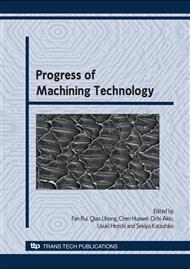p.644
p.649
p.654
p.658
p.662
p.667
p.672
p.676
p.680
A Denoise Method of Electrical Discharge Machining Gaps Signal for Non-Conductive Engineering Ceramics Based on Wavelet MMA
Abstract:
EDM; Gap voltage/current; Wavelet analysis; Modulus maxima algorithm Abstract: According to the characteristics of Electrical Discharge Machining Gaps Signal for Non-conductive Engineering Ceramics, the wavelet modulus maxima algroithm was uesed to denoise the gaps voltage/current signal. Compaered the differernt denoising result of different wavelet function, Maxihat wavelet, Meyer wavelet, Daubechies wavelet and Gaussian wavelet, the fitting wavelet function, Gaussian wavelet which used to denoising the EDM Gaps voltage/current signal was found out, and the fitting scales space [-5,+1] and the normalized threshold value interval [0.1,0.3] was determined.
Info:
Periodical:
Pages:
662-666
Citation:
Online since:
February 2009
Authors:
Price:
Сopyright:
© 2009 Trans Tech Publications Ltd. All Rights Reserved
Share:
Citation:


